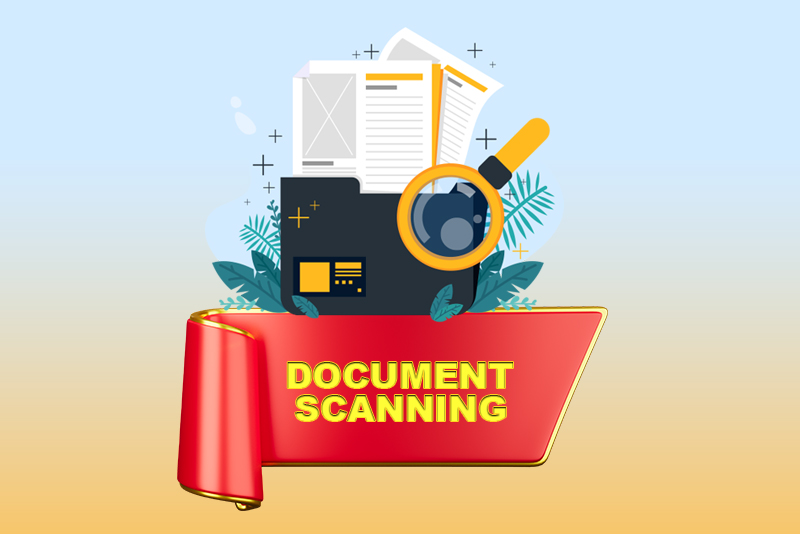The human resources department in an organization performs numerous cross-departmental tasks in addition to managing hiring within the company. To structure and develop rules, HR works with finance, sales, accounting, and other departments. They also deal with a lot of paper documents, which can be difficult. Hours may be spent combing through every cabinet and drawer in search of a specific document. Additionally, there is a potential that these paper records are lost as a result of possible risks such as fire or gradual decay, which is bad news if they contain sensitive or important data. The use of document scanning services, however, has enabled HR departments to digitize and keep all business data safely and securely.
Significance of Scanning HR Documents
The primary responsibilities of businesses and/or their human resources departments include hiring, conducting performance reviews, and promoting safety. The HR division handles a variety of papers, including:
- Personnel records
- Provident Fund details
- Medical plan documentation and records of health benefits
- Employee Benefit Correspondence, including ESIC
- Direct deposits and pre-payment authorizations in banks
- Job applications and resumes for internships or jobs
- Records of instruction
- Reviews of performance, attendance, absences, and time-clock data
- Advertising
- Administrative files and benefit change requests
- Exit interview and termination paperwork
- Legal paperwork, including contracts, confidentiality agreements, and non-disclosure agreements
Employers and HR personnel may find it challenging to organize, preserve, and have access to this information when needed because documenting all of this information can be a paper-intensive procedure. Every organization should strive to maintain centrally located, easily searchable employee records. Making the switch from paper to electronic records will speed up, simplify, and streamline your HR process. By indexing and organizing these documents, you can better manage your people, which would reduce hassles and stress, and streamline file management.
How Is Document Scanning Useful for the HR Department?
- Improved management of document flow: Organizations frequently transfer papers among their various offices around the world. Paper files are constantly being moved, which makes it extremely difficult to monitor and control the information flow. Centralizing resources on a server or in the cloud is made simpler by scanning these dispersed documents into digital files. The first issue is overcome when HRs are aware of where to find each item specifically. Labeling and indexing follow. It significantly reduces the amount of time needed to find a file in that sizable central data store. Businesses are moving towards digitized data and document management systems as a solution to this. Such a system effortlessly locates files and electronically transfers them whenever necessary across several offices’ geographical locations.
- Access Control and Security: Employee files are frequently needed by people from different departments. Additionally, HRs provide such information to auditors, governmental entities, legal counsel, etc. Security breaches are frequent in such situations, and it is possible for HR to lose control over the distribution of the documents if they are shared further with various companies and end up somewhere else. For a company, data leaks may be costly, and losing confidential employee information can be hurtful. Organizations should implement stringent cybersecurity measures (firewalls, access protocols, VPNs, etc.) to protect the modern digital vault in order to ensure safety. Digitizing all documents and having a powerful content management system gives you complete control over these files.
- Complete & Up-to-date Data: It can be difficult to determine if paper files contain current and complete employment records. It’s bad news for your business if a staff member unintentionally removes a document and forgets to put it back. During an audit, undesirable circumstances may arise. If there are missing documents, it could result in legal fees if a lawsuit is filed, which could be even worse. A centralized electronic document management system and scanning of documents can make all of the HR data, both old and new, constantly accessible.
- Following retention standards: There is a separate retention schedule for each type of document. Employee termination marks the end of the retention period, while other data may have different expiration dates. Paper documents are stored long after the retention period has passed. While information on fired employees is sent to the store off-site, which is a complete waste of resources. Retention rules are simple to trace thanks to HR digitization. A digital system is set up to automatically mark outdated data for deletion.
- Better use of time: The HR department is typically understaffed, and in a developing company, a small number of executives handle the needs of a large number of employees. Most of the time, HR managers will be maximizing their use of the few resources at their disposal. According to a recent poll of businesses with at least 50 employees, 41% of HR staff members spend at least 10 minutes each day looking for paper HR papers. The HR department ends up saving a significant amount of time and effort that can be used elsewhere when files are made available in a digital, systematic and structured fashion.
- Digitize your employees’ files: Begin with the basics. Even for your older employee records, if your personnel records are still paper-based, you must make the switch as soon as possible. Only 12% of all businesses fully save their employee files online, according to the most recent study. Companies are required by regulations to keep all records for the duration of the retention term. You can digitize your inactive records to gain better control over all of these files immediately even if this data is geographically dispersed in several cities or nations.
- Effective hiring experience: The onboarding of new staff takes a lot of time and effort. There are numerous papers that need to be assessed and shared within your team. Unfortunately, paper records can only be in the possession of one employee at a time, which leads to recruiting bottlenecks and makes team cooperation challenging or impossible.The hiring process can be expedited and wasted time reduced by having many team members evaluate applicants’ resumes and credentials simultaneously when they are digitalized. It’s quick and simple to distribute documents around your team, which facilitates data sharing and teamwork during the deliberation stage.
Human Resources Departments have long maintained paper records, but managing these records effectively can be difficult. You can get the ideal solution for regular HR offices with the help of professional HR document scanning services. This is why digitizing all vital documents for your office may be beneficial. You may organize your documents perfectly through bulk document scanning.




